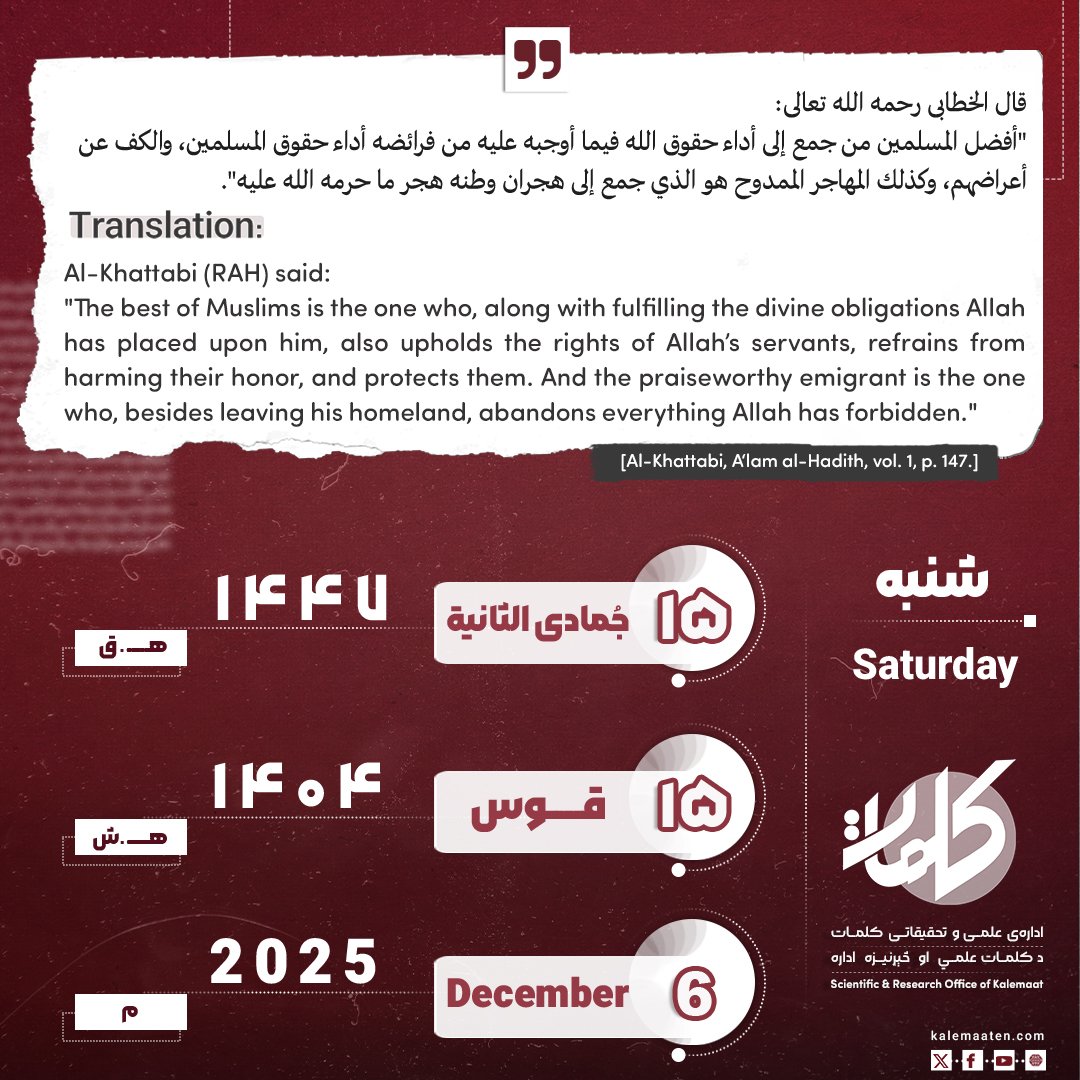Author: Abu Raef
The Role of Muslims in the Formation and Development of Sciences (Part 41)
Muslim scholars utilized the scattered knowledge and principles that the Greeks, Romans, Persians, and Chinese had offered in the field of mechanics. They then developed it extensively, introduced innovative techniques, and through their own inventions, transformed it into a practical and highly significant discipline. Before this, it was mostly considered a source of amusement or had magical aspects. Muslims referred to this science as Ilm al-Hiyal (The Science of Ingenious Devices). By “hiyal,” they meant methods for overcoming difficult conditions to achieve specific goals—reducing the need for human or physical labor, increasing mechanical power, and using a small force to generate far greater energy than that of a person or animal.
Their aim in advancing this science was to bring comfort to human life, to replace brute force with ingenuity and intellect, to use machines instead of the body, and to eliminate the exhausting use of slaves. This was especially in line with Islamic teachings, which prohibit physical exploitation for livelihood and emphasize avoiding harm to servants and slaves, as well as burdening animals beyond their capacity.
Translation:
Islam forbids exploiting people physically for daily needs and emphasizes not mistreating servants or overloading animals.
Thus, the Muslim inclination to develop tools that could perform heavy tasks on behalf of humans was a civilizational pursuit, typical of nations that walk the path of knowledge and advancement. This outlook also forms the core philosophy of every invention that scientists design daily to improve human life and ease its difficulties.
Ilm al-Hiyal al-Nafi’ah (The Science of Beneficial Devices) reflected an advanced technical aspect of Islamic civilization, where engineers and technicians placed their theoretical knowledge in the service of religion, urban development, and civilization.
While earlier nations had focused on the religious and spiritual effects of mechanics—such as priests using speaking or moving statues or producing rhythmic sounds and special instruments in temples—Islam came and established that the connection between the worshipper and God does not require intermediaries or visual deceptions.
Translation:
Islam established a direct connection between a servant and the Creator, without need for mediators or illusions.
Therefore, the new purpose of Ilm al-Hiyal al-Nafi’ah was to create real-life benefits through mechanical instruments. These devices were designed based on air movement (aerodynamics), the motion and balance of fluids (hydrodynamics and hydrostatics), slow-acting mechanical valves, remote control systems, scientific instruments, bridges, underground water canals (qanats), architecture, building decoration, and other fields.
Looking into the past, we can say that mechanical engineering technologies in the Islamic world blossomed in the 3rd century AH (9th century CE), thanks to the efforts of a group of prominent Muslim scientists. One of the most important phases of this development is the legacy left by these pioneers in the field of mechanical engineering.
1. The Sons of Musa ibn Shakir
The three brothers—Muhammad (d. 259 AH / 873 CE), Ahmad, and Hasan (d. 261 AH / 874 CE)—were sons of Musa ibn Shakir and lived in the 3rd century AH (9th century CE). They excelled in mathematics, astronomy, applied sciences, and engineering. They are especially famous for their valuable book titled Hiyal Bani Musa. Imam Ibn Khallikan said about this book:
Translation:
“They wrote an extraordinary and rare book on mechanical tricks which contains many astonishing things. I read it and found it one of the most enjoyable and excellent books.”
This book describes one hundred mechanical devices with detailed instructions and illustrations explaining how to build and operate them. Their use of automatically functioning valves and systems activated after set time intervals is among the earliest known ideas of automatic control, marking a significant achievement in the history of science and technology. They also used conical valves and mechanical axles that worked on their own developments far ahead of their time. In fact, they described a mechanism similar to what appeared in Europe five hundred years later.
Examples of Bani Musa’s mechanical inventions include a lamp that doesn’t go out in strong wind; another lamp that automatically adjusts the wick and pours oil in such a way that observers think the flame consumes neither oil nor wick. They also invented a fountain that changes the pattern of water flow between a fearful spray and a gushing stream, with these changes occurring continuously.
Among their most admired inventions is a large astronomical observatory device powered by water. It would display all the stars in the sky and reflect them on a large mirror. Whenever a star appeared, the device would track it, and when a star or meteor disappeared, it would be observed and recorded immediately.
They also created tools for agriculture, such as special mangers for animals, designed so that each animal could access its food and water comfortably without interference from others. They designed water tanks for baths, instruments to measure the density of liquids, and devices to manage irrigation efficiently and prevent water loss in farms. These creative inventions greatly contributed to the advancement of Ilm al-Hiyal al-Nafi’ah—what we now call mechanical engineering—because their designs combined rich imagination, precise descriptions, and a pioneering experimental approach.
Continues…
Previous Part/ Next Part
1.What Did Muslims Offer to the World? p. 328.
2.Basha, Ahmad Fuad, Islamic Scientific Heritage: A Thing of the Past or a Provision for the Future? p. 29, First Edition, Dar al-Fikr al-Arabi, 1423 AH.
3.Ibid., p. 30.



